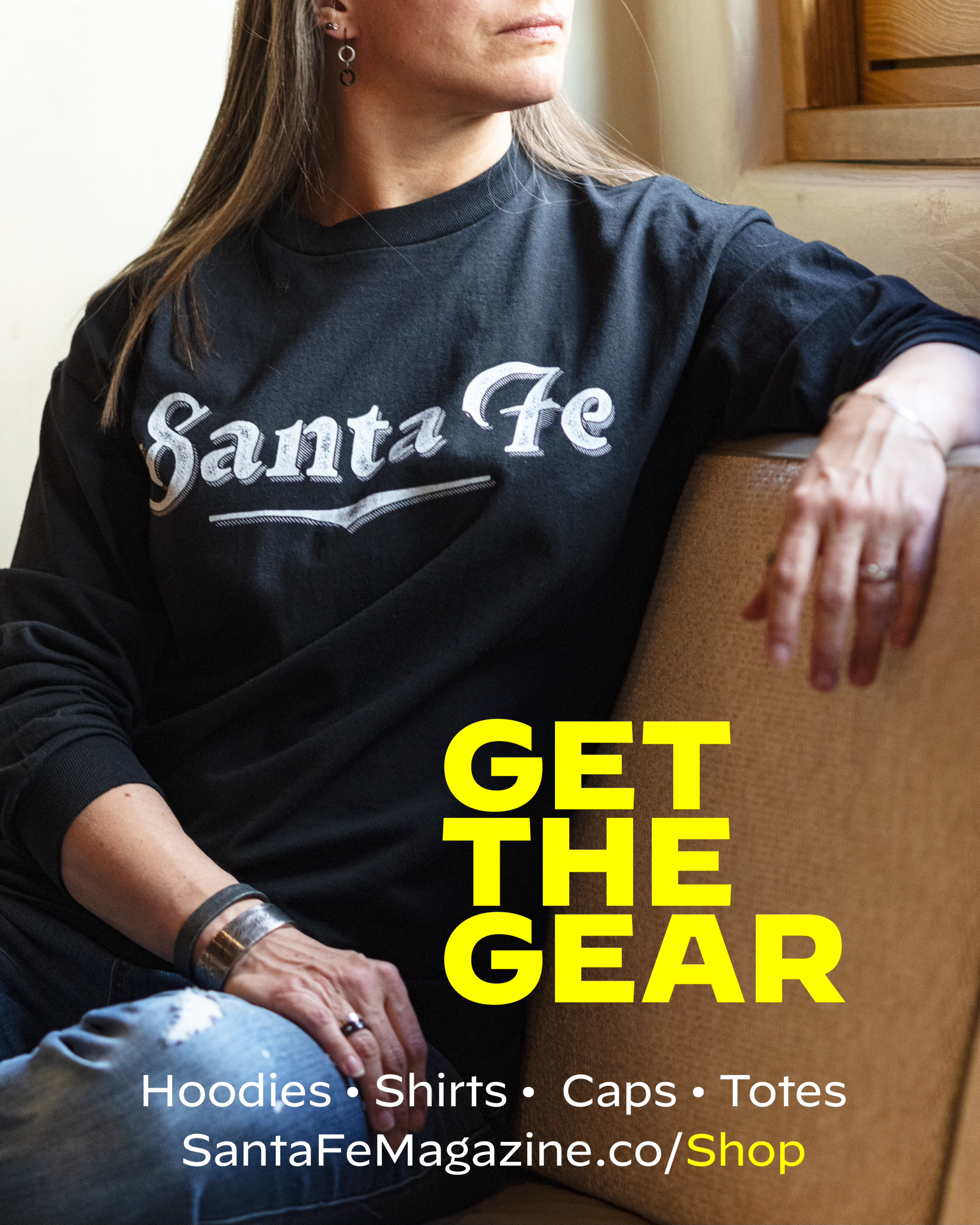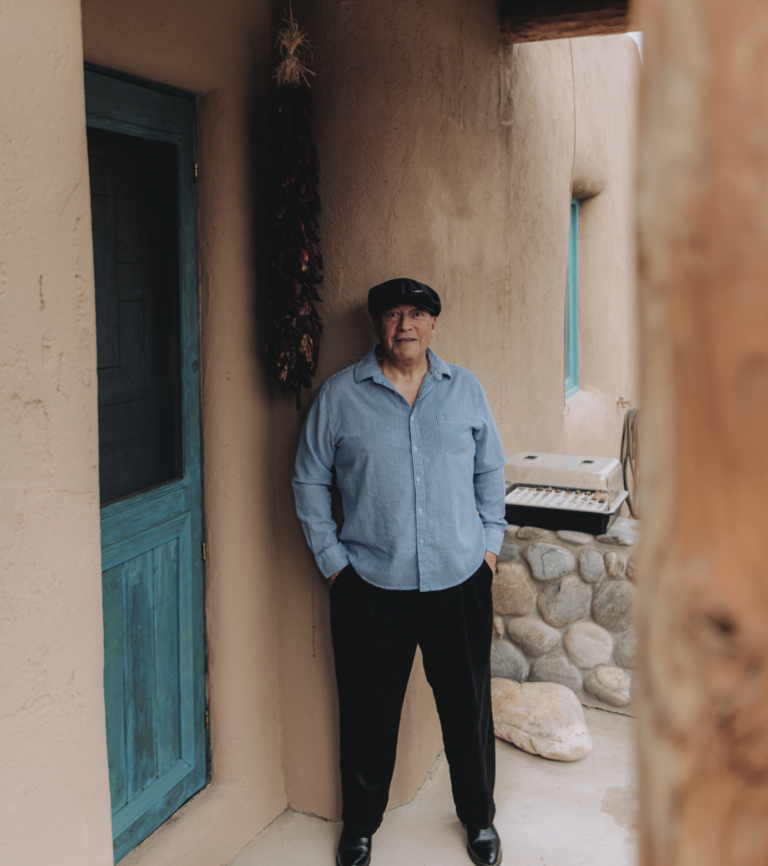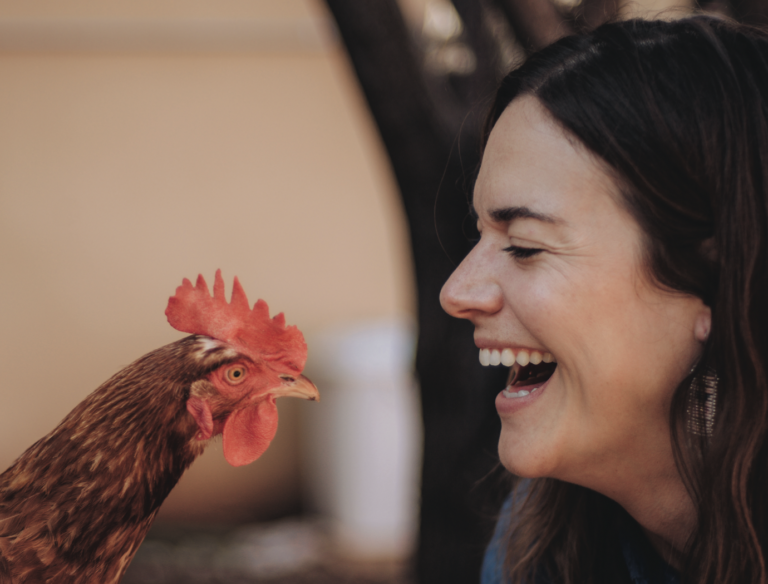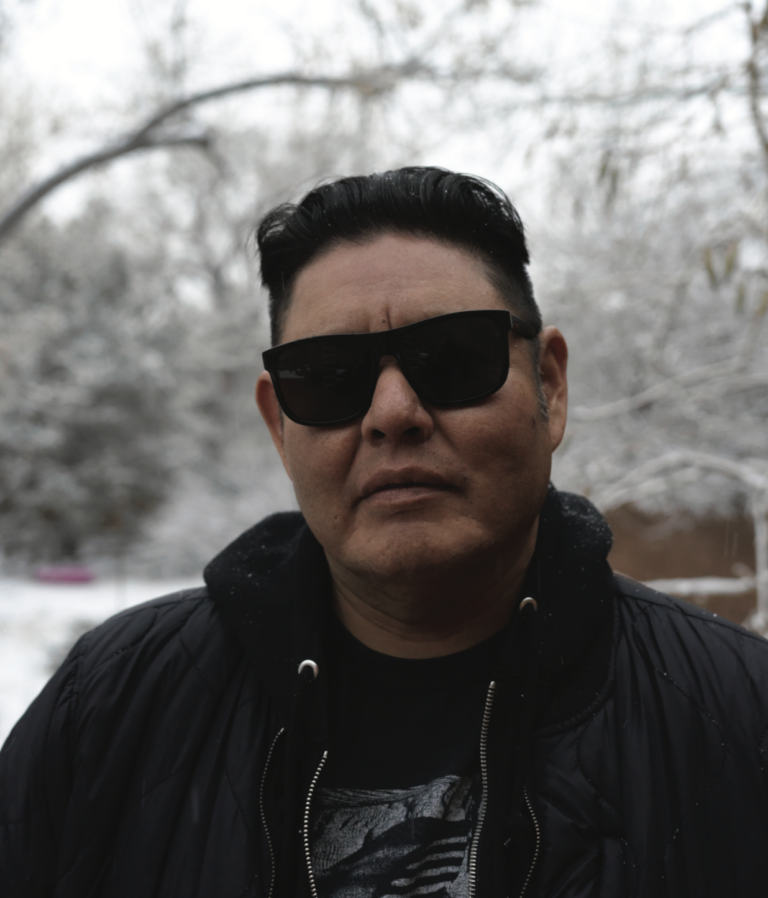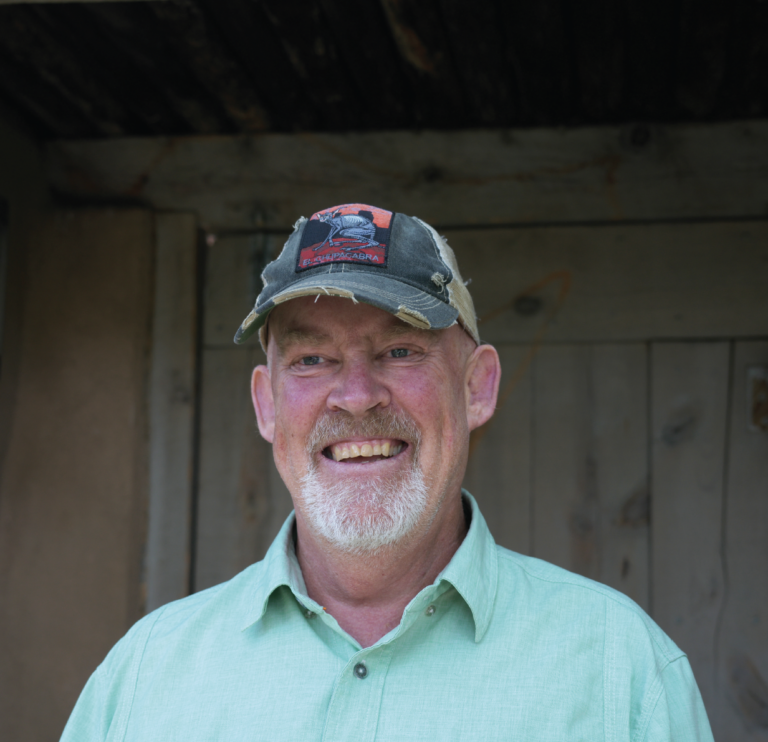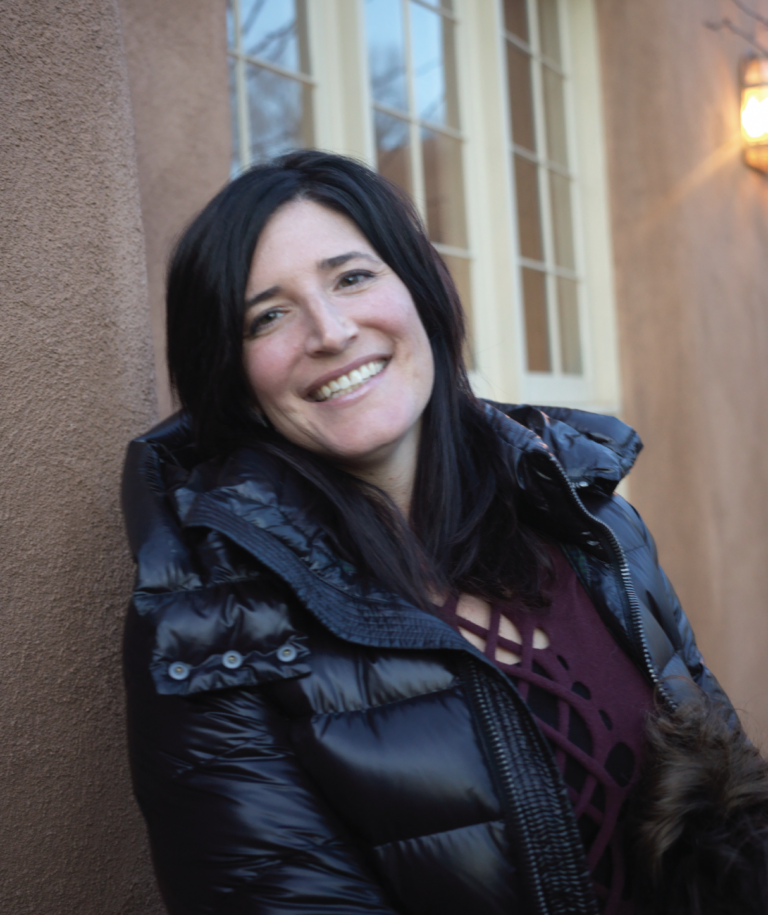IF THERE COULD BE SUCH A THING AS central casting for a cool human being, it’s Maurice. He lives and works in a 1930s-era loft studio just off Route 66, near the airport. Outside, there are several junked cars, a crippled dog, and then his rusted front door. He greets me, weed wafting in the air. There are paintings leaned against the wall, some placed far enough away from where he sits, seemingly so that he might not be easily tempted to make a change. I ask if he is. “No,” he responds flatly, “I know when something is finished.”
“I just had a show in New York,” he offers. “A painting sold for $60,000 to a Nigerian bank owner.” He was bemused.
Thoughtful, proud, and expansive, he sometimes seemed surprised by his own construction, or reconstruction. He spoke about the arc of life, his influences, his amazement…even incredulity over his own luck, his recognition as a prodigy (at math and art), and the broad swath of his experimentation and freedom, though is rueful about his luck with women, one in particular.
He likes where he is now, but doesn’t like being 83.
I was trying to figure out what it was that gave him such presence. One of the paintings in the back depicted a saxophone player playing in the middle of a desert surrounded by a few palm trees. He just laughed when I asked about it.
Jazz is everywhere with him, around him, and is principally what he listens to. It’s in his art. It’s in his voice. Maybe that was it: the improvisation, the syncopation, the forceful rhythm-strength in all registers, the serene intensity, seductive and antagonistic. There’s also an easy confidence, one that incorporates joy, sadness, a comfort with change, the high and lows—the almost ineffable mystery of man.
Jazz.
On Indiana:
I always got a positive outlook, and I’m never afraid. You know, like, I grew up in Gary, man, and with the background I had, it was nothing but possibilities out there. Anything is better than living in Gary.
On computers:
I went from brick laying to the telephone company to acing some tests they gave me, and they put me into computers because I had a real high IQ in math and figuring shit out. I was a natural at it. It’s like you have a natural ear for music and play…a natural eye for math; you can understand it and figure it out and solve differential equations and shit like that. It’s just interesting. I look at some of my old math books and I go, “I can’t believe I understood this stuff…they’re talking about logarithms!”
I ended up down at the Chicago headquarters with IBM guys, designing systems, and it was the same old surface integration. “We’re liberal. Look, we got a Black here!” But we’re in an area where a Black guy got killed looking for a job. Right there was Marquette Park, where Martin Luther King got hit in the head with a brick.
But after a couple of years, I was the top of the line in each department that I worked on. I had a gift for it. I was wearing Brooks Brothers and working in downtown Chicago, right off of Randolph. That was what afforded me to drive a 911 Targa Porsche and live on the 28th floor of this apartment building on the Gold Coast. But it was just all money…superficial shit. I wasn’t that interested in the people. I was into art, and all my friends were off-the-wall people, man. They were artists, musicians, and people like that.
On deciding to be an artist:
Talking to IBM guys, they said, “Music is a great background for designing systems, and you can read music, you can chart and do all that stuff.” A lot of computer stuff is designing—flow charts and logic plates and so forth, and I thought, “Well, that ain’t too far from painting and art.” I just wanted to paint, paint, paint, do art, man. And an art degree is just as good as a math degree, so I went to Rhode Island School of Design.
I took an acid trip before it got popular, and it was still in the sugar cube form. This chick I knew in New York, living in the Village, she was one of the really most far-out Village chicks there was, and she said they were going up to Woodstock for a week, doing acid. I didn’t know what she was talking about. She’s, “Well I’ll send you some,” so I get an envelope with about four little sugar cubes with a little dot in them. It was after one of them trips that I had visions of being an artist…when that flashed on. “That would be the dream,” I thought, “to be able to just paint.”
On artist R. B. Kitaj:
He was friendly as fuck, man, and a little shy, kind of, but very intense. He was driven about his likes and dislikes, and passionate about art, and people, and drafting, and sticking with the old masters and draftsmanship and, “Draw, draw, draw.” He was strictly into that…not into the New York scene of abstraction and expressionism and all that. He was an outsider, outlier, and he was a little intimidating to people.
From him, I saw all the things I’ve wanted to do in art. He’s using portraiture and draftsmanship at the same time. He’s including abstract elements. He didn’t stick to a 3D vanishing point standard stage setting. It could be collage-like and things in different sizes, and introducing thought and idea. It wasn’t just a picture, but it’s a picture that meant something, although you wouldn’t know what it means, necessarily, but it still survived on its own as a painting, as a picture, graphically, with color and all the other stuff, but it still had content.
On music:
I see a cluster of notes and I know that’s a lot of fast stuff. I’d see these single notes and they’re going up and down, and here’s where thing are fast and slow. I could just see that, I could follow the rhythm of the chart…not knowing what note was what, but that it had a flow to it. And I thought that was interesting,
so I started composing like Thelonious Monk composes, and that’s another approach to art…because Monk could take a regular tune, flip it upside down and twist everything around, and it was a whole different tune. And the nice thing about Monk, he’d play three notes and you know it’s him.
On Santa Fe:
Freedom, man, that’s why I came here. It’s like a foreign country. It doesn’t feel like the rest of the United States, for one, which I can’t stand. I don’t want to go out there and be in that mess. It’s too, too much violence, too much hate and animosity and people in each other’s faces…the finger and “Fuck you” kind of shit. This is getting away from all of that. I came here to put all that behind me and just concentrate on my art, me, and to let it come in…not just impose my will on everything. Living every moment in the now and letting things happen—trying to glom some ideas from that and meditating on it and see what comes to mind and what image strikes me. It might be a title, or an idea, or an image, and I’ll see that and it triggers something off.
The light is great. The light is terrific. And the space, since the space lets me breathe. I need room. I don’t need people within 15 feet of me 24 hours a day, man. I like to have the openness to go out. Something feels freeing, liberating about that. One of the things that attracted me to New Mexico was it had the fewest number of people per square miles than just about anywhere. Except South Dakota, or there’s Wyoming maybe, or some other places. I wanted to get away from people. Humanity…I think humanity sucks. People are a drag. They’re a disease on the planet, man. Yeah, they do nothing on this planet but destroy it. We’re a disease.
On being a Black artist:
Well, to me, that is like a tag. You can call me anything you want. It doesn’t matter. I know what I am. I remember one dude from New York telling me, “It’s hot now. Black art’s in. You got to paint what they like. You got to paint the Black blah, blah, blah…” And I asked [painter] Jacob Lawrence, “Well, what about this, man?” He says, “Paint what you feel. Who you are will come out. You don’t have to just paint Black people or just Malcolm X or Martin Luther King. Express yourself. Whatever you are will be expressed in your art. Be honest and just let it come out.”
On God:
Nature speaks to me, and that’s liberating. It’s a very spiritual-feeling land here. And I’m not a religious nut…not a Bible thumper and all that, but I believe in a spirit, and a higher intelligence or something. I pray to all of the gods I can think of. I don’t leave nobody out.
I accept everybody’s god, because if that’s their truth—that’s what you believe—who am I to argue? But to me, there is only one, kind of. There are rules, like “All is one, and one is all,” and “What you put out is what you get back.”
Living in the present’s the main thing, and to drift towards what makes me feel good. And being open to change. Being open to things happening, and accept it when it comes. Don’t talk yourself out of it. You’re looking for change to come from that direction: “It’s coming over here,” you say. “Don’t bother me. It’s got to come from over there.” I just go with instinct, and it’s allowed me to take chances where I go out there and see, man.
In the end, you’ll make out.
Learn more at mauriceburns.com
Photo Andy Johnson

